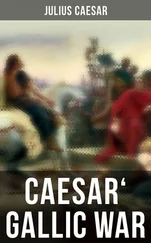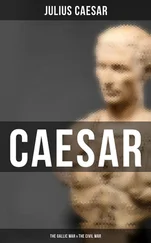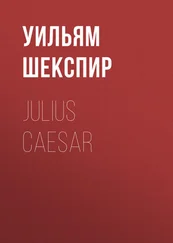Napoleon III - History of Julius Caesar Vol. 2 of 2
Здесь есть возможность читать онлайн «Napoleon III - History of Julius Caesar Vol. 2 of 2» — ознакомительный отрывок электронной книги совершенно бесплатно, а после прочтения отрывка купить полную версию. В некоторых случаях можно слушать аудио, скачать через торрент в формате fb2 и присутствует краткое содержание. Жанр: foreign_antique, foreign_prose, Биографии и Мемуары, на английском языке. Описание произведения, (предисловие) а так же отзывы посетителей доступны на портале библиотеки ЛибКат.
- Название:History of Julius Caesar Vol. 2 of 2
- Автор:
- Жанр:
- Год:неизвестен
- ISBN:нет данных
- Рейтинг книги:4 / 5. Голосов: 1
-
Избранное:Добавить в избранное
- Отзывы:
-
Ваша оценка:
- 80
- 1
- 2
- 3
- 4
- 5
History of Julius Caesar Vol. 2 of 2: краткое содержание, описание и аннотация
Предлагаем к чтению аннотацию, описание, краткое содержание или предисловие (зависит от того, что написал сам автор книги «History of Julius Caesar Vol. 2 of 2»). Если вы не нашли необходимую информацию о книге — напишите в комментариях, мы постараемся отыскать её.
History of Julius Caesar Vol. 2 of 2 — читать онлайн ознакомительный отрывок
Ниже представлен текст книги, разбитый по страницам. Система сохранения места последней прочитанной страницы, позволяет с удобством читать онлайн бесплатно книгу «History of Julius Caesar Vol. 2 of 2», без необходимости каждый раз заново искать на чём Вы остановились. Поставьте закладку, и сможете в любой момент перейти на страницу, на которой закончили чтение.
Интервал:
Закладка:
248
De Bello Gallico , II. 7. – ( Plate 9 gives the plan of the camp, which has been found entire, and that of the redoubts with the fosses, as they have been exposed to view by the excavations; but we have found it impossible to explain the outline of the redoubts.)
249
De Bello Gallico , II. 12. – Sabinus evidently commanded on both sides the river.
250
De Bello Gallico II. 12. – Sabinus evidently commanded on both sides the river.
251
See the biographies of Cæsar’s lieutenants, Appendix D .
252
De Bello Gallico , II. 11.
253
The vineæ were small huts constructed of light timber work covered with hurdles and hides of animals. (Vegetius, Lib. IV. c. 16.) See the figures on Trajan column.
In a regular siege the vineæ were constructed out of reach of the missiles, and they were then pushed in file one behind the other up to the wall of the place attacked, a process which was termed agere vineas ; they thus formed long covered galleries which, sometimes placed at right angles to the wall and sometimes parallel, performed the same part as the branches and parallels in modern sieges.
254
The terrace ( agger ) was an embankment, made of any materials, for the purpose of establishing either platforms to command the ramparts of a besieged town, or viaducts to conduct the towers and machines against the walls, when the approaches to the place presented slopes which were too difficult to climb. These terraces were used also sometimes to fill up the fosse. The agger was most commonly made of trunks of trees, crossed and heaped up like the timber in a funeral pile. – (Thucydides, Siege of Platæa . – Lucan, Pharsalia . – Vitruvius, book XI., Trajan Column .)
255
Antiquaries hesitate between Beauvais, Montdidier, or Breteuil. We adopt Breteuil as the most probable, according to the dissertation on Bratuspantium, by M. l’Abbé Devic, cure of Mouchy-le-Châtel. In fact, the distance from Breteuil to Amiens is just twenty-five miles, as indicated in the “Commentaries.” We must add, however, that M. l’Abbé Devic does not place Bratuspantium at Breteuil itself, but close to that town, in the space now comprised between the communes of Vaudeuil, Caply, Beauvoir, and their dependencies. – Paris, 1843, and Arras, 1865.
256
De Bello Gallico , II. 15.
257
De Bello Gallico , II. 14, 15, 16. Mons is, in fact, seated on a hill completely surrounded by low meadows, traversed by the sinuous courses of the Haine and the Trouille.
258
According to scholars, the frontier between the Nervii and the Ambiani lay towards Fins and Bapaume. Supposing the three days’ march of the Roman army to be reckoned from this point, it would have arrived, in three days, of twenty-five kilomètres each, at Bavay.
259
If Cæsar had arrived on the right bank of the Sambre, as several authors have pretended, he would already have found that river at Landrecies, and would have had no need to learn, on the third day of this march, that he was only fifteen kilomètres from it.
260
It is worthy of remark, that still at the present day the fields in the neighbourhood of the Sambre are surrounded with hedges very similar to those here described. Strabo (II., p. 161) also mentions these hedges.
261
De Bello Gallico , II. 17.
262
“The signal for battle is a purple mantle, which is displayed before the general’s tent.” (Plutarch, Fabius Maximus , 24.)
263
Signum dare , “to give the word of order.” In fact, we read in Suetonius: “Primo etiam imperii die signum excubanti tribuno dedit: Optimam matrem .” ( Nero , 9; Caligula , 56. – Tacitus, Histor. , III. 22.)
264
The soldiers wore either the skins of wild beasts, or plumes or other ornaments, to mark their grades. “Excussit cristas galeis.” (Lucan, Pharsalia , line 158.)
265
Except the Treviran cavalry, who had withdrawn.
266
According to Titus Livius ( Epitome , CIV.), 1,000 armed men succeeded in escaping.
267
De Bello Gallico , II. 28.
268
According to the researches which have been carried on by the Commandant Locquessye in the country supposed to have been formerly occupied by the Aduatuci, two localities only, Mount Falhize and the part of the mountain of Namur on which the citadel is built, appear to agree with the site of the oppidum of the Aduatuci. But Mount Falhize is not surrounded with rocks on all sides, as the Latin text requires. The countervallation would have had a development of more than 15,000 feet, and it would have twice crossed the Meuse, which is difficult to admit. We therefore adopt, as the site of the oppidum of the Aduatuci, the citadel of Namur.
Another locality, Sautour, near Philippeville, would answer completely to Cæsar’s description, but the compass of Sautour, which includes only three hectares, is too small to have contained 60,000 individuals. The site of the citadel of Namur is already in our eyes very small.
269
We translate quindecim millium by 15,000 feet; the word pedum , employed in the preceding sentence, being understood in the text. When Cæsar intends to speak of paces , he almost always uses the word passus .
270
De Bello Gallico , II. 33.
271
De Bello Gallico , II. 35. – Plutarch, Cæsar , 20. – Cicero, Epist. Famil. , I. 9, 17, 18.
272
This passage has generally been wrongly interpreted. The text has, Quæ civitates propinquæ his locis erant ubi bellum gesserat . ( De Bello Gallico , II. 35.) We must add the name of Crassus, overlooked by the copyists; for if Anjou and Touraine are near Brittany and Normandy, where Crassus had been fighting, they are very far from the Sambre and the Meuse, where Cæsar had carried the war.
[273] De Bello Gallico , III. 6
273
Some manuscripts read Esuvios , but we adopt Unellos , because the geographical position of the country of the Unelli agrees better with the relation of the campaign.
274
They leagued with the Osismii ( the people of the department of Finistère ), the Lexovii ( department of Calvados ), the Namnetes ( Loire-Inférieure ), the Ambiliates ( on the left bank of the Loire, to the south of Angers ), the Morini ( the Boulonnais and bishopric of Saint-Omer ), the Diablintes ( Western Maine ), and the Menapii ( between the Rhine and the mouths of the Scheldt ). ( De Bello Gallico , III. 9.)
275
Orosius (VI. 8) confirms this fact as stated in the Commentaries.
276
“The Veneti fought at sea against Cæsar; they had made their dispositions to prevent his passage, into the isle of Britain, because they were in possession of the commerce of that country.” (Strabo, IV. iv., p. 162, edit. Didot.)
Читать дальшеИнтервал:
Закладка:
Похожие книги на «History of Julius Caesar Vol. 2 of 2»
Представляем Вашему вниманию похожие книги на «History of Julius Caesar Vol. 2 of 2» списком для выбора. Мы отобрали схожую по названию и смыслу литературу в надежде предоставить читателям больше вариантов отыскать новые, интересные, ещё непрочитанные произведения.
Обсуждение, отзывы о книге «History of Julius Caesar Vol. 2 of 2» и просто собственные мнения читателей. Оставьте ваши комментарии, напишите, что Вы думаете о произведении, его смысле или главных героях. Укажите что конкретно понравилось, а что нет, и почему Вы так считаете.












